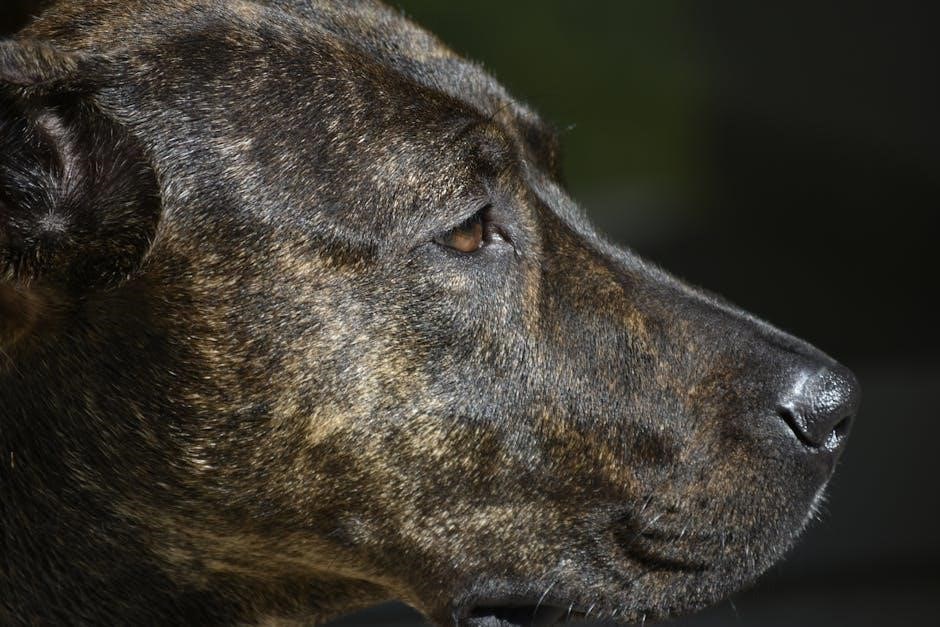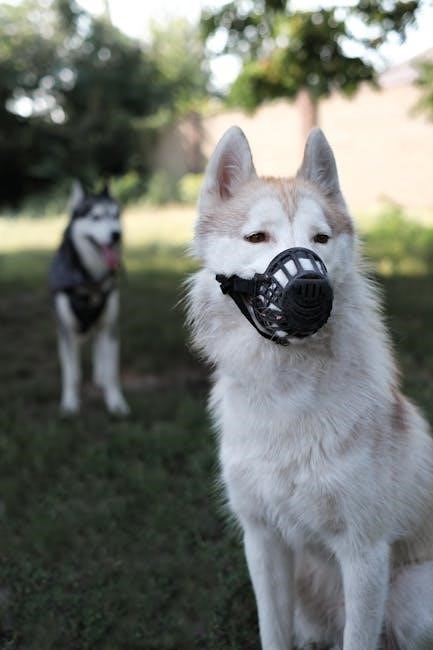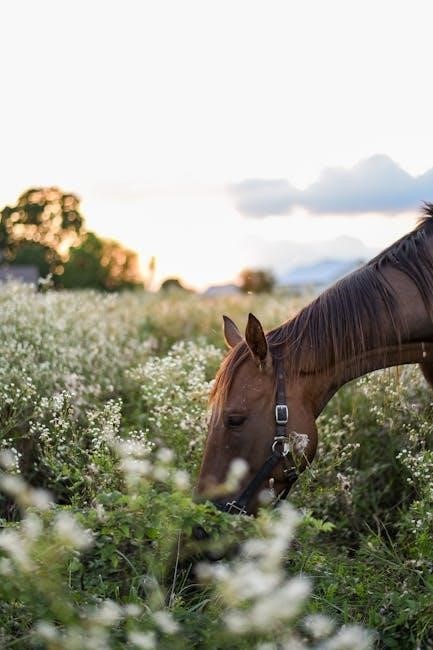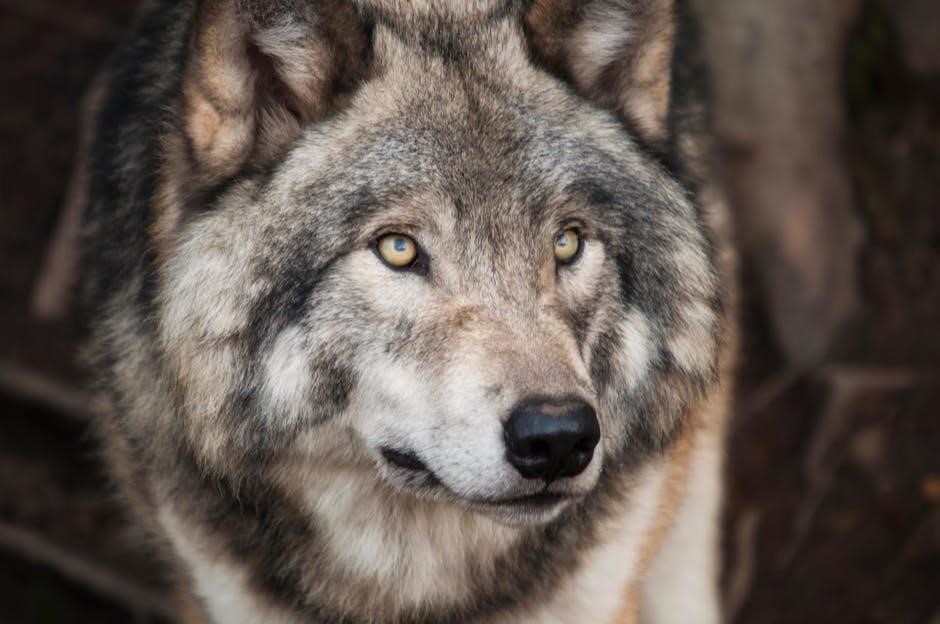A proper muzzle fit ensures comfort and safety for your dog․ This guide helps you choose the right size, from small breeds to large, using precise measurements and breed-specific considerations․

Why Muzzle Size Matters
Incorrect muzzle size can cause discomfort, restrict movement, or lead to anxiety․ Proper fit ensures your dog can breathe, eat, and move comfortably, making training and behavior management easier․ It also prevents legal issues in public spaces․ Choosing the right size is crucial for your dog’s well-being and your peace of mind․
Key Considerations for Choosing the Right Muzzle
When selecting a muzzle, prioritize your dog’s comfort, breed-specific needs, and intended use․ Measure snout circumference, length, and width accurately․ Ensure the muzzle allows panting and treats․ Consider adjustable straps for a secure fit․ Material and durability are also important, especially for reactive or strong dogs․

How to Measure Your Dog’s Muzzle

To measure your dog’s muzzle, start by determining the snout circumference, typically around the widest part just below the eyes․ Next, measure the muzzle length from the tip of the nose to the stop, where the muzzle meets the forehead․ Finally, assess the snout width across the top at its widest point․ Ensure the tape measure is level and not angled for accurate results․ Consider adding a little extra to the measurements to ensure comfort and proper fit, especially for breeds with distinct muzzle shapes․ Use a flexible tape measure and maintain consistency to avoid discrepancies․ For accuracy, measure each part separately and compare them, ensuring the dog remains calm throughout the process․ If needed, desensitize your dog to the tape measure with treats or gentle practice․ Double-checking each measurement will help ensure a proper fit, crucial for both comfort and functionality of the muzzle․
Measuring Snout Circumference
To measure your dog’s snout circumference, wrap a flexible tape measure around the widest part of their muzzle, typically just below the eyes․ Ensure the tape is not too tight or loose․ This measurement ensures the muzzle fits comfortably without restricting breathing or movement․ The muzzle’s circumference should be 1-3 inches larger than your dog’s snout to allow panting and comfort․
Measuring Muzzle Length
Measure your dog’s muzzle length from the tip of the nose to the stop (where the muzzle meets the eyes)․ This ensures the muzzle fits correctly without obstructing vision or movement․ A proper length allows your dog to pant and stay comfortable while wearing the muzzle․ Accuracy is key for optimal fit and functionality․
Measuring Snout Width

Snout width is measured across the top of your dog’s snout at its widest point, typically 1/2 inch below the eyes․ This measurement ensures the muzzle sits comfortably without slipping or causing discomfort․ Proper width alignment is crucial for effective functionality and your dog’s ease of movement while wearing the muzzle․

Factors Affecting Muzzle Size
Breed standards, snout shape, and your dog’s comfort influence muzzle size․ Proper sizing balances security, mobility, and breathing, ensuring a stress-free experience during use․
Breed Standards and Muzzle Shape
Breed-specific muzzle shapes cater to diverse snout lengths and widths․ For instance, long-snouted breeds like Greyhounds require differently designed muzzles compared to brachycephalic breeds such as Pugs․ Ensuring the muzzle aligns with your dog’s natural anatomy enhances comfort and functionality, reducing the risk of restricted breathing or skin irritation․
Dog’s Comfort and Mobility
A well-fitted muzzle ensures your dog’s comfort and mobility․ It should allow panting, drinking, and eating while preventing unintended biting․ Proper sizing prevents skin irritation or breathing difficulties, ensuring your dog remains relaxed and active during use, whether for training or public outings․
Intended Use of the Muzzle
The muzzle’s purpose dictates its design and fit․ For training, a breathable, lightweight muzzle is ideal, allowing for treat-based reinforcement․ For reactive dogs, a sturdy option may be necessary․ Public settings like transport or dining require specific models, ensuring safety while maintaining your dog’s ability to pant and eat, as needed․
How to Choose the Right Size
Choosing the right muzzle size involves using weight and breed guidelines, referencing detailed size charts, and ensuring the muzzle is 1-3 inches larger than your dog’s snout circumference for comfort and proper functionality․
Using Weight and Breed Guidelines
Weight and breed guidelines help determine the ideal muzzle size․ Different breeds have unique muzzle shapes and sizes, so using breed standards ensures a proper fit․ Weight guidelines also provide a starting point, though measurements should always be verified․ This approach ensures the muzzle is comfortable and functional for your dog, regardless of its size or breed․ Proper fit is essential for safety and effectiveness․
Understanding Size Charts
Size charts provide a structured guide to selecting the right muzzle size․ They typically include measurements for muzzle circumference, length, and width, organized by size categories; Key measurements are often highlighted to ensure proper fit․ Always refer to the manufacturer’s specific chart, as sizing can vary․ This ensures your dog’s muzzle is both comfortable and functional, meeting their specific needs effectively․

Types of Muzzles Based on Size
Muzzles are categorized into small, medium, and large sizes, catering to breeds like Bichon Frise, Cocker Spaniel, and German Shepherd․ Each size ensures proper fit and functionality․
Small Breed Muzzles
Small breed muzzles are designed for toy and terrier breeds, ensuring comfort while preventing biting․ They are lightweight and adjustable, with sizes based on snout circumference and length․ Measure 1-2 inches below the eyes and choose a muzzle 1-3 inches larger than your dog’s snout for proper fit; Ideal for breeds like Bichon Frise or Pomeranian․

Medium Breed Muzzles
Medium breed muzzles suit dogs like Cocker Spaniels or Beagles, balancing comfort and functionality․ Measure snout circumference 1 inch below the eyes and choose a size 1-3 inches larger․ Ensure the muzzle allows panting and is durable for active use․ Adjustable straps provide a secure fit, making them ideal for training or reactive dogs in public settings․
Large Breed Muzzles
Large breed muzzles are designed for dogs like German Shepherds or Labradors, offering durability and comfort․ Measure snout circumference 1-2 inches below the eyes and select a size 1-3 inches larger․ These muzzles often feature sturdy materials and adjustable straps to ensure a secure fit, ideal for training, walking, or managing reactivity in strong, active dogs․
Ensuring a Proper Fit
A well-fitting muzzle allows your dog to pant and drink comfortably․ Measure snout circumference 1-2 inches below the eyes and choose a size 1-3 inches larger for optimal comfort․
Signs of a Well-Fitting Muzzle
A muzzle fits well if your dog can pant, drink, and eat treats comfortably․ The muzzle should allow one to two fingers of space around the snout without restricting movement or causing pressure points․ Proper fit ensures your dog remains calm and cooperative, making training and outings stress-free for both you and your pet․
Adjusting the Muzzle for Comfort
Ensure the muzzle allows your dog to pant, drink, and eat treats․ Adjust straps for a snug but non-restrictive fit, leaving one to two fingers of space around the snout․ Soft padding and breathable materials enhance comfort, while proper alignment prevents rubbing or pressure points․ Regular checks and gradual desensitization help your dog acclimate to wearing the muzzle․

Breed-Specific Muzzle Considerations
Different breeds require muzzles tailored to their unique facial structures․ For example, long-snouted breeds need muzzles allowing鼻子 space, while flat-faced breeds require more room for comfort and breathing․
Popular Breeds and Their Muzzle Needs
Popular breeds like Pit Bulls and Bulldogs require muzzles tailored to their unique snout shapes․ Pit Bulls benefit from secure, durable designs, while Bulldogs need wider snout space for comfort․ German Shepherds and similar medium breeds often use wire basket muzzles for optimal airflow․ Always match muzzle size to your dog’s specific needs for comfort and functionality․
Special Cases for Flat-Faced or Long-Snout Breeds
Flat-faced breeds like Pugs and Bulldogs need muzzles with extra snout space to prevent breathing issues․ Long-snout breeds, such as Dachshunds, require muzzles allowing jaw movement․ Measure carefully to ensure comfort and avoid skin irritation․ Choose muzzles designed for these unique shapes to provide optimal fit and functionality for your dog’s specific needs and comfort․
Legal and Safety Considerations
Know local laws requiring muzzles in public spaces like transport and dining areas․ Service dogs often exempt․ Ensure proper fit for safety and legal compliance always․
Public Transport and Dining Rules
Dogs must wear muzzles on public transport and in dining areas unless they are service or guide dogs․ Ensure your dog’s muzzle is properly fitted for safety and legal compliance․ Always check local regulations for specific requirements, as rules may vary by region or establishment․
Service and Guide Dog Exceptions
Service and guide dogs are exempt from muzzle requirements in public spaces, including transport and dining areas․ Their specialized training and roles allow them to operate without muzzles, ensuring their functionality and assistance to owners․ However, proper identification and certification are typically required to validate their status and exemptions․

Training Your Dog to Wear a Muzzle
Start with short sessions, using positive reinforcement and treats․ Gradually introduce the muzzle, ensuring comfort and acceptance․ Consistency and patience are key for a stress-free experience․
Desensitization and Positive Reinforcement
Begin by letting your dog explore the muzzle at their own pace, offering treats and praise․ Gradually introduce wearing it, rewarding calm behavior․ This method builds trust and reduces anxiety, making the muzzle a positive experience for your dog․ Consistency and patience are crucial for successful desensitization and acceptance․
Practical Tips for First-Time Use
Introduce the muzzle gradually, starting with short sessions․ Use treats to encourage your dog to wear it comfortably․ Ensure the muzzle allows for panting and drinking․ Avoid forcing it on, as this can create negative associations․ Make the experience positive with rewards and gentle encouragement to build your dog’s confidence and acceptance․
Choosing the right muzzle size ensures comfort, safety, and effectiveness․ Accurate measurements and breed-specific considerations guarantee a proper fit, fostering a secure and stress-free experience for your dog․
Final Tips for Optimal Muzzle Fit
- Ensure the muzzle allows for panting and drinking comfortably․
- Choose materials that suit your dog’s behavior and climate․
- Regularly check fit, especially for growing dogs․
- Consider adjustable straps for a customizable fit․
- Always prioritize your dog’s comfort and safety․
Where to Find Additional Resources
For more detailed guidance, visit manufacturer websites for size charts and fitting guides․ Pet supply stores often provide expert advice and measuring tools․ Breed-specific organizations and veterinary clinics can offer tailored recommendations․ Online forums and communities also share real-life experiences and tips for optimal muzzle fit and comfort․
